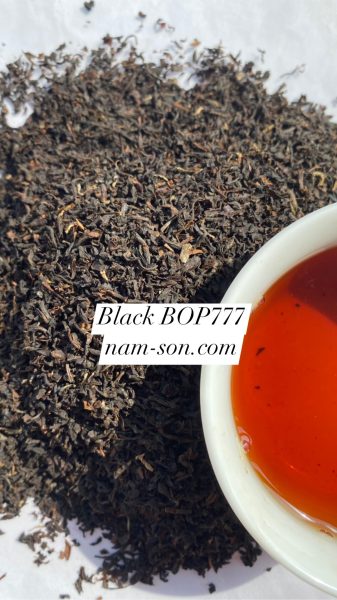The grading of black tea plays a crucial role in determining the quality, flavor, aroma, and appeal of tea to consumers worldwide. Whether you are a tea lover or a tea exporter, understanding the factors that influence the grading of black tea is essential to appreciating the complexities in every cup. In this article, we will explore the key factors that determine black tea grading and why they are important.
What Is Black Tea Grading?
Black tea grading is a classification system based on the size, shape, and quality of the tea leaves. This is an essential step in the tea production process, helping producers, traders, and consumers identify the quality of the tea. The grading system also determines the value of the tea, as higher-grade teas typically command higher prices due to their superior quality.
Some of the common black tea grades include:
- BOP (Broken Orange Pekoe)
- OP (Orange Pekoe)
- FBOP (Flowery Broken Orange Pekoe)
- TGFOP (Tippy Golden Flowery Orange Pekoe)
- Souchong
- Pekoe

Factors That Determine the Grading of Black Tea
- Tea Leaf Size One of the primary factors in black tea grading is the size of the tea leaves. Larger, whole leaves are often considered higher grade because they provide better flavor and aroma. This is reflected in grades such as OP (Orange Pekoe), where whole leaves are used. Smaller leaves, which may break during processing, are graded into lower levels such as BOP (Broken Orange Pekoe) and FBOP. These grades tend to have a stronger flavor but may lack the finesse of larger, whole leaves.
- Leaf Appearance The appearance of the tea leaves is another critical factor in grading. Tea leaves that are neatly rolled and intact are often considered higher quality, as they show careful plucking and processing. In contrast, leaves that are broken or irregularly shaped are typically classified into lower grades. High-grade teas like TGFOP often feature golden tips and young, tender leaves, resulting in a delicate flavor and special aroma.
- Freshness and Quality of the Tea Leaves Freshness plays a crucial role in grading black tea. Tea that is processed quickly and efficiently retains its freshness and natural oils, which enhances its flavor and aroma. If tea leaves are stored for too long or processed improperly, they lose their freshness and lower their grade. Fresh, high-quality tea leaves are found in top grades like TGFOPS, while older or poorly processed leaves are graded lower.
- Harvesting Standards and Time of Harvest The quality of tea leaves depends heavily on the timing of the harvest. The best teas are picked from the tender buds and top leaves, referred to as “two leaves and a bud.” Teas harvested early in the season, typically during the first flush, tend to be higher quality, offering a fresher taste and superior quality. Lower-grade teas such as BOP or OP may come from later harvests or from lower parts of the tea plant.

- Processing Method The processing method also affects the grading of black tea. The level of oxidation, the method of rolling, and the drying process all impact the final flavor and appearance of the tea. High-grade teas undergo more careful and meticulous processing, resulting in a uniform, high-quality product with fewer defects. Lower-grade teas may be processed less carefully.
- Growing Region and Growing Conditions The region where the tea is grown plays a significant role in the grading of the tea. Different regions produce unique characteristics due to variations in soil, altitude, and climate. For example, tea from regions like Darjeeling or Assam often has a higher grade due to ideal growing conditions, while tea from less favorable regions may be graded lower in quality.
- Flavor and Aroma The final determining factor in black tea grading is the flavor and aroma. High-grade teas, such as TGFOPS, stand out for their delicate, smooth flavor and distinct aroma, often with floral, fruity, or honey notes. Lower-grade teas like BOP or OF tend to have a bolder flavor, but they may lack the subtle nuances found in higher-grade teas.
Why Is Tea Grading Important?
- Price and Market Value The grade of tea directly affects its price and market value. High-grade teas such as TGFOPS or TGFOPS are more expensive because they offer a refined, complex tea experience. In contrast, lower-grade teas like BOP or OF are more affordable and are often favored for bulk consumption or tea bags.
- Consumer Preferences Tea grading helps consumers select products that suit their tastes and budget. Those who prefer bold, strong flavors may opt for lower-grade teas like BOP, while those who appreciate a lighter, more delicate taste and special aromas often seek higher-grade teas like TGFOPS.
- International Markets Tea grading is crucial for international trade, as it helps standardize the quality of tea across regions and countries. Exporters can efficiently meet the demands of international markets by understanding the grading system and selecting the appropriate teas for specific markets. For example, OP and TGFOPS are popular in discerning markets like Europe and North America, while BOP may be favored in regions that enjoy stronger teas.
Conclusion
The grading of black tea is determined by various factors, including the size, appearance, and freshness of the leaves, as well as the region and method of harvest. Grades like BOP, OP, OF, and TGFOPS not only reflect the quality of the tea but also influence its flavor, aroma, and market value. Whether you are a producer, distributor, or consumer, understanding tea grading helps you select the right tea and appreciate the nuances of each cup.
